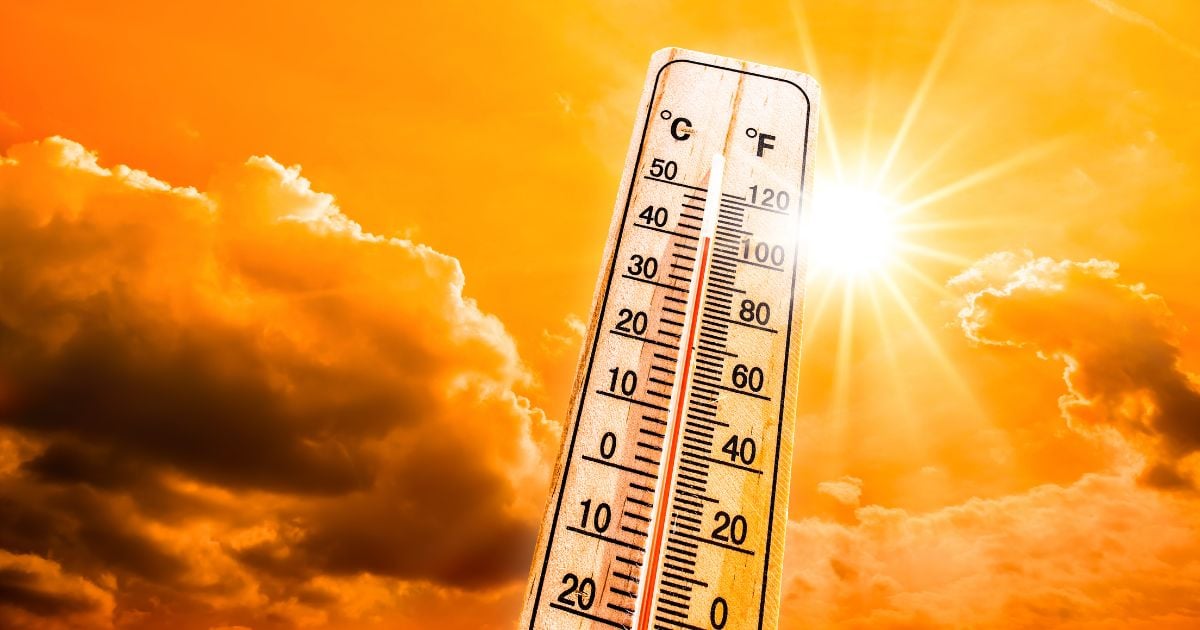We’ve been suffering from a heatwave for about a month, and it seems it’ll continue to be sweltering for the whole of 2024.
But, be grateful because the heat we’re experiencing in Singapore is already considered to be not too bad already.
Schools Closed In The Philippines
All public schools in the Philippines were suspended for two days (29 and 30 April) due to extreme heat and a nationwide strike by jeepney drivers.
The Philippines is facing record-breaking temperatures, but most schools there don’t have air-conditioning, causing students to suffer in stuffy classrooms with poor ventilation.
The school closure was announced after the temperature in Manila, the country’s capital, hit a record high of 38.8°C on 27 April. The heat index, which is what the temperature feels like to the human body when considering factors such as humidity and windspeed, reached 45°C.
On the same day, Camiling Municipality in Tarlac province, North of Manila, recorded a temperature of 40.3°C – the Philippines’ highest this year.
People have been flocking to pools and malls to fight the heat amidst the heat wave.
People Are Dying Of Heatstroke In Thailand
In Thailand, at least 30 people have died of heat stroke.
Thai authorities issued an extreme heat warning for Bangkok on 24 April, and yet another warning the following day.
The warnings come as temperatures soar in Thailand, with the Thai capital recording 40.1°C on 24 April. The heat index also rose to 52°C, causing it to be classed as “extremely dangerous” by city authorities.
A week ago, temperature reached 44.2°C in the northern province of Lampang.
The government has advised people to stay indoors as much as possible, stay hydrated, and wear breathable clothing of light colours.
Bangladeshis Praying For Rain
In Bangladesh, thousands of Muslim worshippers gathered in city mosques and rural fields to pray for rain.
Temperatures across the nation have reached more than 42°C, and the country has been suffering from fewer rainstorms than average during this period.
In response to the prayers, the country’s authorities had also ordered all schools to cancel classes until the end of the month to protect the children from the heat.
Vietnam Suffering From Longest Heat Wave In Decades
In the first four months of 2024, Ho Chi Minh City has experience the highest number of hot days (when the day’s highest recorded temperature is above 35°C) in nearly 30 years.
On average, two out of three days in the city recorded temperatures that exceeded 35°C.
The heat wave is spelling trouble for farmers who are experiencing drying soil despite valiant efforts to keep watering, and the situation is worsening due to increased competition for water as everyone fights for resources.
Myanmar Records Temperature of 48.2°C
Yes, 48.2°C is the temperature, not the heat index.
Myanmar baked in a heatwave when it recorded its hottest ever April temperature of 48.2°C on 29 April, the highest the country has seen in April since records began 56 years ago.
Thousands of schools across the nation suspended in-person classes due to the hot weather, but even homes aren’t safe from the heat as outdated electricity grids there struggle to keep fans and air-conditioners working around the clock.
Many have been forced to sit outside under the shade of trees for any relief from the heat, as fans and air-conditioners that don’t work make homes seem even hotter and stuffier.
Singapore’s Students Advised To Wear PE Attire
Though Singapore is not experiencing the worst heat in the region, the country has been experiencing high maximum temperatures around 34°C to 35°C, causing many to turn on their air-conditioners and flock to indoor places.
Some schools in Singapore advised their students to dress in physical education (PE) attire to help them beat the heat.
Wearing shorts instead of pants, pinafores, and skirts have helped thousands to feel just a little cooler amidst the country’s high temperature.
Heat Wave Worsened By El Niño
April is typically the hottest time of the year in many Southeast Asian countries, but it’s especially hot this year due to the El Niño weather pattern.
You can watch this video for more information:
El Niño is a large-scale climate phenomenon over the tropical Pacific Ocean, and brings warmer-than-usual temperatures to countries in the region due to high surface temperatures over the ocean.
The phenomenon brings drier and warmer weather to most of Southeast Asia, worsening the current heat wave.
In 2023, we experienced insane heat and thought the world was going to end because nearly 20 temperature-related records were matched or broken.
Unfortunately for us, this year is projected to be hotter than last year so we can expect lots of suffering for a while.
That being said, we probably won’t be comfortable with the temperature until December when Singapore’s “winter” arrives.
On the bright side, there’s a possibility things might start to look up for us soon because there are indicators that El Niño is weakening now.
Moreover, the positive Indian Ocean Dipole contributed to the heat last year. Fortunately for us, the Indian Ocean Dipole is neutral right now, so we might just be able to make it out alive this year.
Hopefully.



